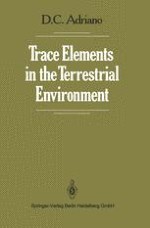1986 | Buch
Über dieses Buch
I intend to fill, with this book, a need that has long been felt by students and professionals in many areas of agricultural, biological, natural, and environmental sciences-the need for a comprehensive reference book on many important aspects of trace elements in the "land" environment. This book is different from other books on trace elements (also commonly referred to as heavy metals) in that each chapter focuses on a particular element, which in tum is discussed in terms of its importance in our economy, its natural occurrence, its fate and behavior in the soil-plant system, its requirement by and detriment to plants, its health limits in drinking water and food, and its origin in the environment. Because of long distance transport to pristine areas of cadmium, lead, copper, and zinc in relatively large quantities, these elements have an extra section on natural ecosystems. A blend of pictorial and tabular data are provided to enhance understanding of the relevant information being conveyed. Since individual chapters are independent of one another, they are arranged alphabetically. However, readers with weak backgrounds in soil science are advised to start with the chapter on zinc, since soil terminology is discussed in more detail here. Sections on sorption, forms and speciation, complexation, and transformations become more technical as soil physical-(bio )chemical phenomena are discussed. The less important "environmental" trace elements are discussed together in the "Other Trace Elements" chapter.
Anzeige
